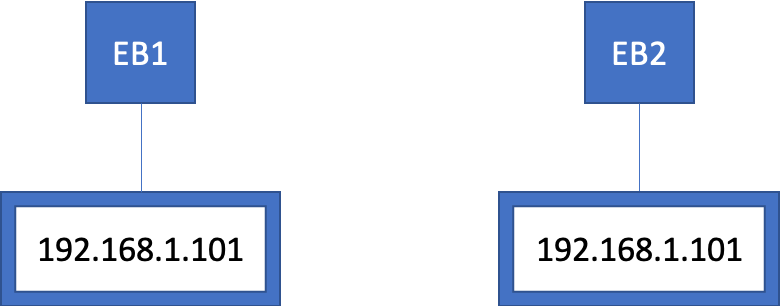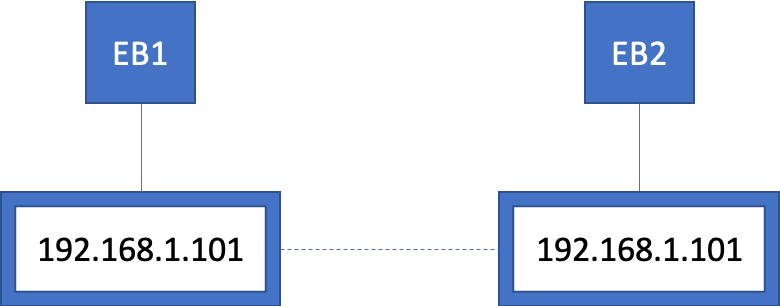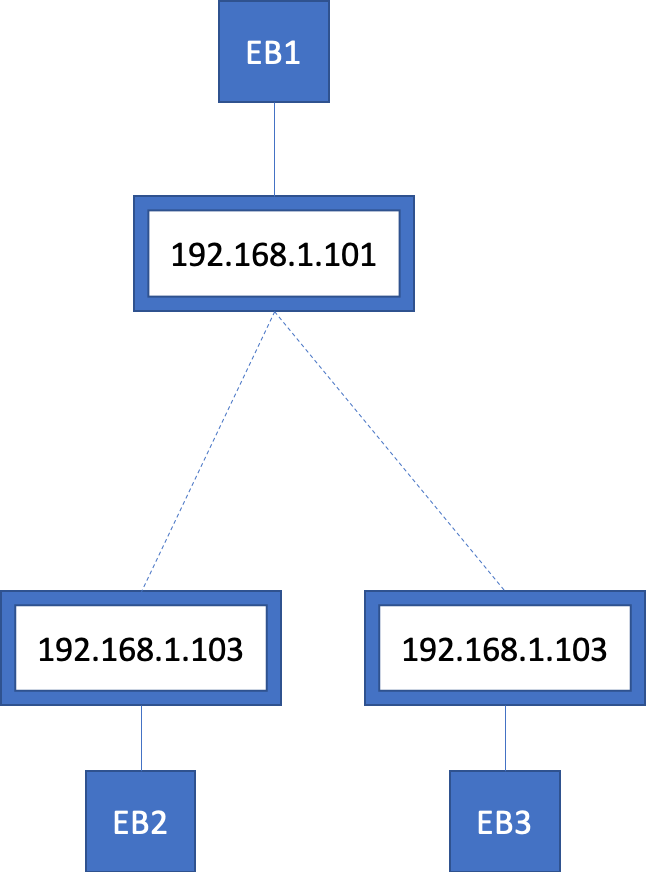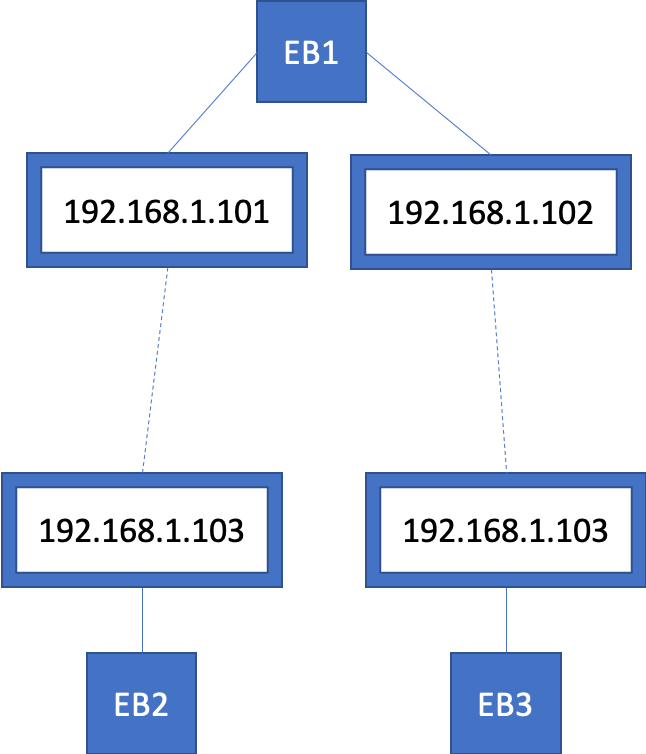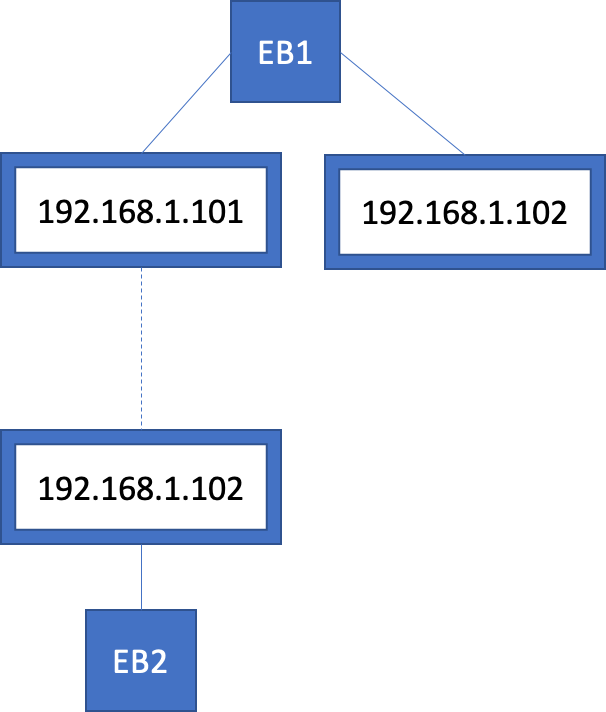Handle IP Conflicts
Learn how to identify and manage IP conflicts in your Airwall secure network.
Your Airwall secure network can manage devices with the same IP as long as these duplicate IPs:
- Are not on the same Airwall Gateway, AND
- Do not have direct, indirect, or implicit policy between them in an overlay.
You can have duplicate IPs on the same overlay, as long as there is no policy between them.
If you are making a change that causes an IP conflict, the Conductor gives you an error message with information on the conflict.
The following diagrams show examples of IP conflicts, with suggestions for removing the conflict besides changing one of the IPs. If you want to have policy between the two, you have to change on of the IP addresses:
| Conflict | No Conflict |
|---|---|
Duplicate IPs on an Airwall Gateway 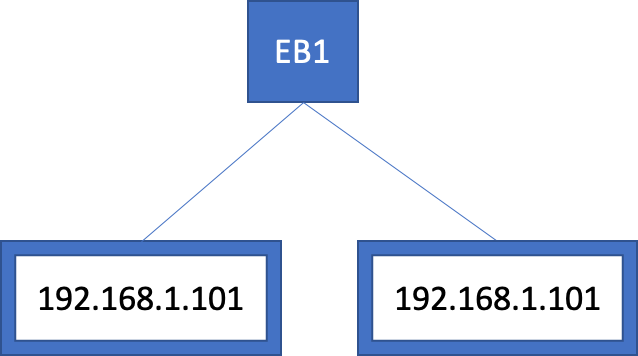 |
Duplicate IPs on different Airwall Gateways, in the same overlay, but with no policy between them.
|
|
Duplicate IPs (in the same or different overlays) with policy to each other
|
Give devices with the same IP a NAT overlay device IP. See Resolve IP conflicts by giving duplicate devices a NAT IP address. |
|
Duplicate IPs in an overlay with policy to a shared IP
|
Duplicate IPs in an overlay with policy to IPs on different Airwall Gateways, or give one of the devices a NAT overlay device IP. See Resolve IP conflicts by giving duplicate devices a NAT IP address. |
|
Indirect conflict – Duplicate IPs in an overlay with policy to IPs on a shared Airwall Gateway.
|
Give devices with the same IP a NAT overlay device IP. See Resolve IP conflicts by giving duplicate devices a NAT IP address |
|
Implicit conflict – IP in an overlay with policy to an IP that shares an Airwall Gateway with the same IP.
|
Give devices with the same IP a NAT overlay device IP. See Resolve IP conflicts by giving duplicate devices a NAT IP address |

